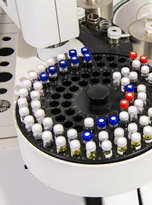Read and report vaccine reactions, harassment and failures.
What is the history of Shingles vaccine in America and other countries?

The first shingles (herpes zoster) vaccine, Zostavax, received approval for use by the U.S. Food and Drug Administration (FDA) in 2006.1 2 Zostavax, manufactured by Merck, was initially licensed for use as a single dose vaccine to be administered to healthy Americans age 60 years and older, without immune system disorders. This vaccine was a much more potent version of the Varivax chicken pox vaccine.3 In 2011, the FDA expanded Zostavax use to include Americans age 50 to 59.4
In 2017, SHINGRIX, a new genetically engineered, adjuvanted, recombinant vaccine manufactured by GlaxoSmithKline, was approved by the FDA for use in healthy adults age 50 and older. The CDC gave preference to the use of SHINGRIX over Zostavax, except in cases where individuals had an allergic reaction to SHINGRIX, in October 2017.5
Shingles vaccine is one of the few vaccines not covered by the National Childhood Vaccine Injury Act of 1986, which means individual may sue the vaccine manufacturer directly for vaccine injuries associated with the vaccine. Merck, the manufacturer for Zostavax, is currently in litigation and defending itself against lawsuits that allege the vaccine caused serious side-effects, including death. 6 In December 2022, a Pennsylvania Federal Judge dismissed nearly 1,200 claims alleging shingles after Zostavax vaccine. The claims were reportedly thrown out by the judge due to a lack of proof that the shingles rash was related to the vaccine. Additional lawsuits alleging both auto-immune disorders and hearing loss are pending.7 Merck discontinued sales of Zostavax in the U.S. in November 2020.8
On March 24, 2021, the FDA announced that it was requiring a new warning on the SHINGRIX package insert about an increased risk of Guillain Barré Syndrome within 42 days of vaccine administration. According to the FDA:9
“The risk of GBS following vaccination with Shingrix was assessed in self-controlled case series analyses using a risk window of 1 to 42 days post-vaccination and a control window of 43 to 183 days post-vaccination. The primary analysis (claims-based, all doses) found an increased risk of GBS during the 42 days following vaccination with Shingrix, with an estimated 3 excess cases of GBS per million doses administered to adults aged 65 years or older. In secondary analyses, an increased risk of GBS was observed during the 42 days following the first dose of Shingrix, with an estimated 6 excess cases of GBS per million doses administered to adults aged 65 years or older, and no increased risk of GBS was observed following the second dose of Shingrix. These analyses of GBS diagnoses in claims data were supported by analyses of GBS cases confirmed by medical record review.”
The FDA, however, reports that the benefits of SHINGRIX vaccine outweigh the risk.
In July 2021, the FDA approved the SHINGRIX vaccine for immunocompromised individuals 19 years and older. The CDC’s ACIP voted to recommend 2 doses of the vaccine for this population in October 2021.10
IMPORTANT NOTE: NVIC encourages you to become fully informed about Shingles and the Shingles vaccine by reading all sections in the Table of Contents , which contain many links and resources such as the manufacturer product information inserts, and to speak with one or more trusted health care professionals before making a vaccination decision for yourself or your child. This information is for educational purposes only and is not intended as medical advice.
References:
[1] Merck & Co. Inc. Package Insert - Zostavax (Frozen). U.S. Food and Drug Administration Dec. 26, 2019.
[2] Merck & Co. Inc. Package Insert - Zostavax (Refrigerator Stable). U.S. Food and Drug Administration Dec. 26, 2019.
[3] U.S. Food and Drug Administration. May 25, 2006 Approval Letter – Zostavax. May 25, 2006.
[4] U.S. Food and Drug Administration. March 24, 2011 Approval Letter – Zostavax. Mar. 24, 2011.
[5] Dooling KL, Guo A, Patel M, et al. Recommendations of the Advisory Committee on Immunization Practices for Use of Herpes Zoster Vaccines. MMWR Jan. 26, 2018; 67(3):103-108.
[6] Luhana, R. Merck Files Motion to Consolidate Zostavax Lawsuits in Florida. The Legal Examiner May 30, 2018.
[7] Kansteiner F. Merck escapes nearly 1,200 Zostavax shingles vaccine lawsuits as plaintiffs' testimony falls short. Fierce Pharma Dec. 8, 2022.
[8] U.S. Centers for Disease Control and Prevention. What Everyone Should Know About Zostavax. In: Vaccines and Preventable Diseases. Oct. 5, 2020.
[9] U.S. Food and Drug Administration. FDA Requires a Warning about Guillain-Barré Syndrome (GBS) be Included in the Prescribing Information for Shingrix. Mar. 24, 2021.
[10] Anderson TC, Masters NB, Guo A, et al. Use of Recombinant Zoster Vaccine in Immunocompromised Adults Aged ≥19 Years: Recommendations of the Advisory Committee on Immunization Practices — United States, 2022. MMWR Jan. 21, 2022; 71(3);80–84.



